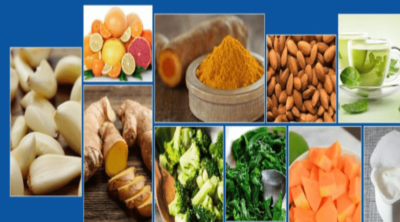
Broccoli rabe (rapini) is jam-packed with a wide range of nutrients including vitamins (like A, C, K) and minerals (like potassium, calcium, and iron). Adding this vegetable to your diet can certainly deliver a real health kick and promote overall well-being.
Choosing Broccoli Rabe
Make sure its leaves have not turned yellow or wilted. Also, look for broccoli rabe that has uniformly green, tightly closed florets.
Broccoli rabe, a cruciferous vegetable, is a relative of broccoli, but is found to be more closely related to the turnip family. No wonder, its leaves appear very similar to that of turnips. It has a bitter taste, very similar to kale than broccoli. Native to China and Mediterranean regions like Italy, broccoli rabe has become an integral part of their cuisine. Though it is abundantly grown in China, it is fast becoming popular in the American cuisine.
Broccoli Rabe Nutrition
Green leafy vegetables have always been an excellent source of nutrition, and broccoli rabe is no different. It delivers the nutrition that your body requires to function properly, and moreover, it provides a strong defense against diseases. Its nutritional value can rival the most nutritious of fruits and vegetables.
| BROCCOLI RABE NUTRITION DATA | |
| Serving size: 40 g (1 cup) | |
| Calories | |
| Total Carbohydrates | 1 g |
| Fat | 0 g |
| Protein | 1 g |
| Dietary Fiber | 1 g |
| Sugar | 0 g |
| Vitamins | |
| Vitamin A | 1049 IU |
| Vitamin C | 8.1 mg |
| Vitamin E | 0.6 mg |
| Vitamin K | 89.6 mcg |
| Thiamin | 0.1 g |
| Folate | 33.2 mcg |
| Choline | 7.3 mg |
| Minerals | |
| Calcium | 43.2 mg |
| Iron | 0.9 mg |
| Magnesium | 8.8 mg |
| Phosphorus | 29.2 mg |
| Potassium | 78.4 mg |
| Sodium | 13.2 mg |
| Zinc | 0.3 mg |
Whether you eat raw or cooked broccoli rabe, it packs a powerful punch of nutrition and health benefits.
- It is chock-a-block with minerals like calcium, iron, and potassium, and vitamins such as A, C, and K. The vitamin K content in rapini meets more than 100% of the daily requirements.
- Also, carrots are not only the source of pro-vitamin A (substance that gets converted by the body to vitamin A). It is also found amply in broccoli rabe.
- The vegetable is also a good source of indole-3-carbinol, an excellent antioxidant, and it displays anticancer properties.
- It also contains disease-fighting compounds such as sulforanes that exhibit both anticancer and antimicrobial properties.
- Phytonutrients like lutein and zeaxanthin that provide eye nutrition are also present in broccoli rabe.
- It is also an excellent source of heart-healthy fats. Just 40 g of rapini contains a whopping 45.2 mg of omega-3 fatty acids.
Like any other green vegetable, calories in broccoli rabe are insignificant. A cup of broccoli rabe provides just 9 calories. So, being low in calories and considered to be one of the richest sources of vitamin A and C, calcium, and iron, do not hesitate to include it in your diet. Sautéing, steaming, braising, and stir-frying are some of the healthy ways of cooking it. As aforementioned, it has a bitter taste, which can be slightly difficult to savor. Cooking the vegetable in boiling water for a minute can certainly help decrease the bitterness. Also, the vegetable can be a great addition to a wide number of dishes including rice and pasta.
Health Benefits
This vegetable is high in calcium, a mineral that plays a crucial role in the development of strong bones. Moreover, it is high in vitamin K, a proven bone nutrient that strengthens the bones. So, adding broccoli rabe recipes to your diet can work wonders to keep your bones healthy.
Broccoli rabe contains a host of anticancer compounds that reduce carcinogenic activity and provide cancer protection. So, regular intake of rapini may contribute in preventing cancer risk.
As this vegetable is found to be an excellent source of antioxidants, it can certainly help curb free radical damage that occurs at the cellular level, in turn slowing down the natural aging process.
Sulforaphanes, naturally occurring compounds present in rapini, can help keep the arteries healthy, thereby, providing protection against strokes. Artery clogging is a primary risk factor in the development of stroke. Sulforaphanes help keep the arteries unclogged, which further help in reducing the risk of strokes.
- Lowers risk of hypertension
- Reduces inflammation
- Promotes cardiovascular health
- Relieves common cold
- Decreases risk of osteoporosis

